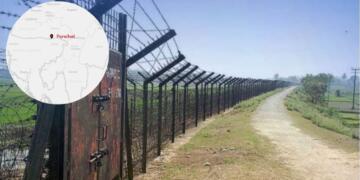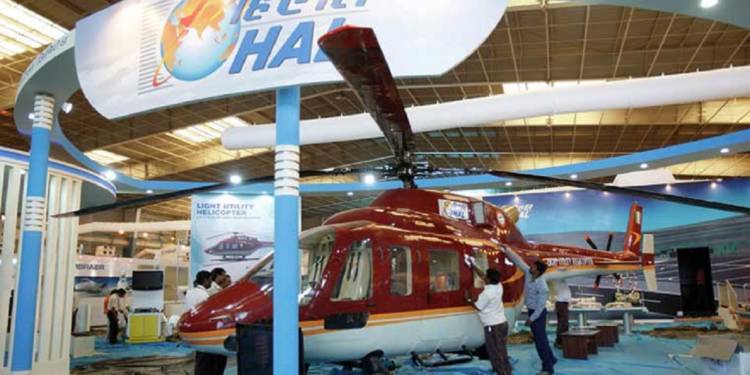As reported by Economic Times, Indian Navy dismissed Hindustan Aeronautics Limited (HAL) for a 21,000 crore rupees chopper deal, and instead wants private players to build alternate capability. HAL was offering a naval version of Advanced Light Helicopter (ALH), which it also supplies to other forces. However, the Indian Navy has told that helicopters sold by HAL do not meet the requirements and are inapt for the search and rescue (SAR) operations.
Also, the Navy wants the private sector to build alternate capacity so that the armed forces do not have to be dependent on sub-standard HAL products. “The ALH has a rigid rotor head and has been designed for high altitude operations, where it is very good at. The problem is that the design limits it in terms of the blade folding capability. In missions such as SAR, every minute is precious and the ALH just takes too much time to be deployed,” said a source as per the report.
The Navy is already operating ALH in utility mode but it needs at least 111 specialized helicopters which can be deployed to carry out multiple roles including that of surveillance and ferrying supplies.
The decision of the Indian Navy dismissing HAL’s helicopters is an indication that the public sector manufacturer which single-handedly monopolized the defence manufacturing since independence could never produce anything worthwhile.
One of the most inefficient companies in the world, HAL took 37 years to manufacture fighter jets. The Indian Air Force has signed Rs. 39,000 crore deal with Hindustan Aeronautics Limited (HAL), for 83 Tejas fighter jets. Tejas is among the most delayed projects of the country and is a prime example of the incompetence of India’s public sector companies. The project for indigenous aircraft was first awarded to HAL in 1983, and it took almost 4 decades for the company to deliver. The HAL made 16 fighter jets which were awarded for the first time to IAF in Feb 2020, almost 37 years after the project was commenced by Indira Gandhi government.
HAL’s Tejas project can be used as an example of the failure of India’s indigenous defence production, as well as that of whole Public Sector Units that dominated the economy. After the country got independence in 1947, many strategic sectors including defence and civil aviation were nationalized, and private entry was shunned.
Almost all the sectors where the government shunned private players resulted in acute failure. Today, India does not even have a single indigenous company standing among the top 30 defence contractors of the world, despite being a third-largest country in terms of spending in the defence sector. Hence, the country has to import almost all-important defence equipment. The Indian products manufactured by companies like HAL are so sub-standard that even the armed forces refuse to use them.
HAL is one of those monuments of the Nehruvian economy that are the testament of their abject failure. The company was established in Bangalore on 23rd December 1940 by Walchand Hirachand to promote defence manufacturing in the country. However, the British government soon forcefully took over the company and nationalized it. Later when India became independent, the nationalized company was brought under the Ministry of Defence.
Read: Hindustan Aeronautics Limited (HAL): India’s white elephant
In later days, HAL was established as the premier defence manufacturer of the country and considerably, a significant amount of resources were put into it. However, HAL could not get any major breakthrough even in seven decades of its existence; and the country continued to import defence equipment from private manufacturers in countries like the United States, France, and the United Kingdom. All that HAL has been able to accomplish is to manufacture less skill-intensive and tech-intensive equipment for the Indian aviation sector by technology transfer from the Soviet Union.
In the last few years, the Modi government is trying to build capacity in the private sector for defence manufacturing, so that India does not necessarily need to import all modern fighting equipment. Last month, Amit Shah led Ministry of Home Affairs held a discussion with 17 private companies to locally manufacture the small arms used by Central Armed Police Forces (CAPF), which were earlier imported from foreign arms manufacturers. The 17 companies which were a part of the discussion included Vem Technologies, Kalyani Strategic, Shyam Arms, Premier Explosives, HYT, L & T, and Godrej.
Read: 37 years for a light combat aircraft. HAL Tejas explains why PSUs need to be shut down
Now, the Indian Navy has also decided to go with the private players instead of dealing with legacy issues such as HAL. The involvement of private players would not only make the country self-dependent but also advance the efficiency and quality of the weapons. If the private players succeed in developing good weapons, in the next few years even state police forces could get rid of the substandard defence equipment and ammunition manufactured by public sector players like Ordnance Factory Board, DRDO, and HAL.

































